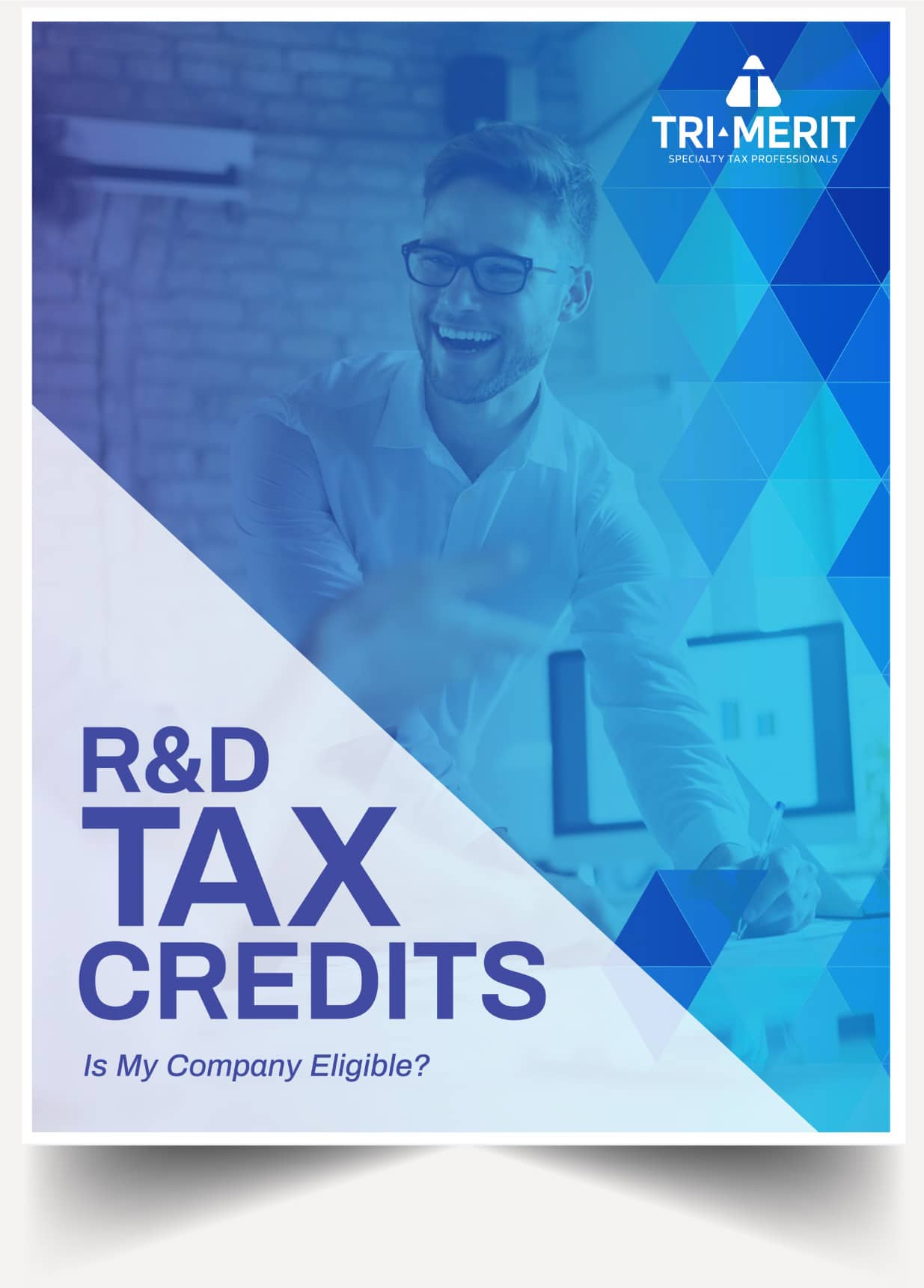Your tax clients expect the CPAs at your firm to provide guidance and advice that lead them to where growth opportunities lie — increasing their ability to make profitable business decisions. Many CPAs focus on performing tax accounting only as protocol demands and overlook longstanding tax incentives such as the Research & Development (R&D)Tax Credit as a way to put cash flow back into the business and minimize tax burden.
Your CPAs don’t necessarily need to be R&D tax credit experts, that is what companies like Tri-Merit are here for; but they, and the tax teams they oversee, should be trained to recognize if the client is taking part in research activities that may qualify them for the credit and know a bit about the process.
1. Become Familiar with the Client’s Business to Identify R&D Tax Credit Opportunities
Being familiar with the client’s business should be a priority for your team – this will set you apart from competing firms because you are better able to identify opportunities to put more money back into the client’s business. Business owners and decision-makers will appreciate the interest and see you as trusted advisors rather than just the people who prepare their taxes.
It doesn’t need to be formal or official, your team should simply ask questions and show curiosity about the business when they talk to clients. By doing this, they will gain knowledge of which clients are evaluating and refining internal processes, procedures and products that could qualify for the credit.
Many businesses that could qualify for the R&D tax credit are not aware that it even exists, or they are aware that it exists but don’t think they qualify. The reality is that a number of companies in a variety of industries typically perform qualifying activities.
Have your team ask about projects that the client is working on, new processes they are creating to improve efficiency, and any new developments within the business that they may be excited about.
An evaluation of the types of employees they have on their payroll can also help your team discover potential R&D tax credit opportunities. For example, if the client employs software designers and developers and/or engineers, there is a very good chance that they may qualify for the R&D tax credit.
2. Determine Qualified Research Activities (QRAs)
The IRS uses a 4-part test to determine if a business activity qualifies as research. Make sure your team is familiar with the 4-part test when they evaluate the client’s eligibility for the credit.
- Qualified Business Component: The activity has to (in most cases) relate to a new or improved product, process, formula, computer software, program, technique or invention.
Example: Hop breeding in craft brewing
- Technological in Nature: The activity being performed must fundamentally rely on the principles of physical science, biological science, chemistry, computer science or engineering.
Example: Computer-aided design (CAD) and computer-aided engineering (CAE) activities including modeling and simulation.
- Eliminate the Uncertainty: The activity must be intended to discover information to eliminate uncertainty concerning the capability or method for developing or improving a product or process or the appropriateness of the product or process design.
Example: Design planning for new processes directly related to manufacturing
- Process of Experimentation: The experimentation process needs to include the evaluation of alternatives in an effort to resolve the technical uncertainty.
Example: Construction of prototype dies for die casting
Even business expenses related to R&D activities that businesses consider to be unsuccessful can still satisfy the requirements of the 4-part test and be eligible for credit benefit recognition.
Although the 4-part test may seem fairly straightforward, there are complexities that many CPAs who are not experts in R&D tax credits will not be aware of unless they spend significant amounts of time pouring over IRS documentation. In fact, having an engineering background coupled with knowledge of the tax code is often the most direct avenue for identifying opportunities. That’s why it’s in your best interest to partner with a team of experts that are well versed in R&D tax credits to help determine if activities do satisfy the 4-part test.
3. Knowing the Types of Research Activities That Do Not Qualify
More often than not, CPAs and business owners are misled by the name “R&D tax credit” into thinking their typical business activities would not qualify for the lucrative tax incentive. That is why it can be helpful to understand what activities are actually excluded.
There are several types of research activities that are excluded from the tax credit. These include:
- R&D activities performed outside the U.S.
- Funded research
- Research in non-scientific areas i.e. social sciences, arts or humanities
- Market/consumer research
- Ordinary quality control testing
- Routine data collection and analysis
- Internal business process development
- Management studies and surveys
- Adaptation or duplication of existing business components (products, inventions, formulas, software, processes or techniques)
- R&D activities conducted solely to improve product aesthetics
- Research conducted after the start of commercial production or implementation of the new innovative component (some exceptions apply)
- Locating and evaluating mineral deposits, including oil and gas
These exclusionary activities are not as straightforward as they may seem. It would be best to contact one of the specialty tax credit experts at Tri-Merit for more information before excluding your clients based on the above criteria.
4. Explaining the R&D Tax Credit to Clients
After learning about the client’s business activities and determining that they could potentially qualify for the tax credit, your CPAs will need to explain what the credit is and why they believe the business might qualify.
The easiest and most engaging way to describe the tax credit goes as follows:
The R&D tax credit is a dollar-for-dollar federal tax credit that incentivizes the development of new or improved products or processes. Companies like yours can qualify for significant federal and state tax savings to allow them to hire new employees, invest in new products and service lines, and grow your business. Potentially any company that performs qualified research activities on U.S. soil can take advantage of the credit.
5. Building a Case for the Client to Receive the Credit
There are a number of factors that contribute to qualifying for this tax credit and you must be able to support, document and validate the case for your client to receive an R&D tax credit.
If you do not have someone in-house that is intimately familiar with R&D tax credits as well as the engineering processes that go into your clients business, it can get complicated as it requires deep evaluation of the facts and circumstances of the research activities.
At Tri-Merit we have extensive experience in the R&D tax credit space and are here to help assess if your client is qualified to receive this credit, follow the proper processes to build a case that meets IRS guidelines, and create clear, concise reports and documentation that support the claims.
Call (847) 595-0094 or go to the website to set up a no-obligation consultation. Click below to learn more about our R&D tax credit consulting services.
We’re committed to your privacy. Tri-Merit Specialty Tax Professionals uses the information you provide to us to contact you about our relevant content, products and services. You may unsubscribe from these communications at any time.



